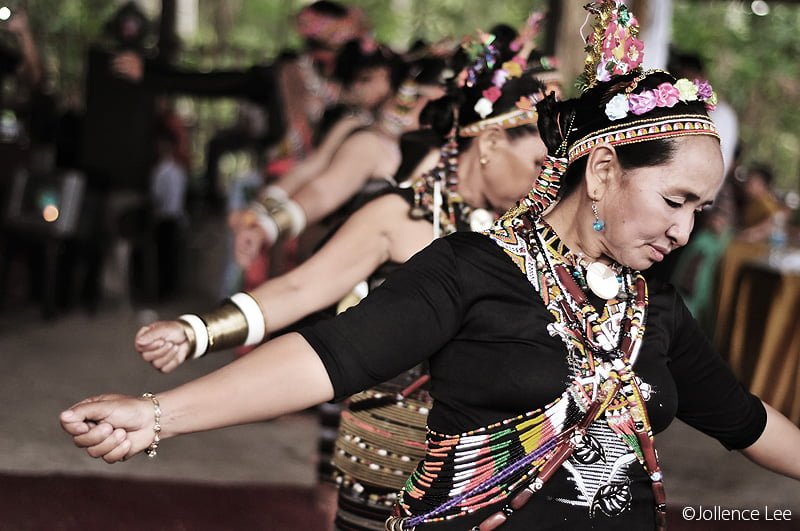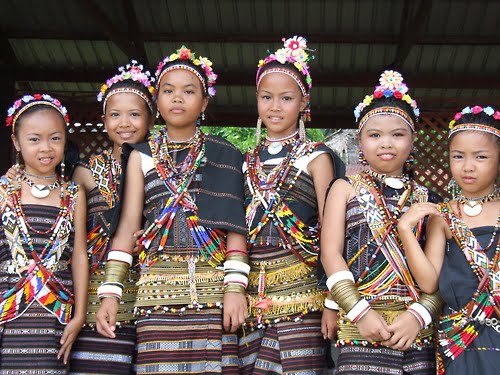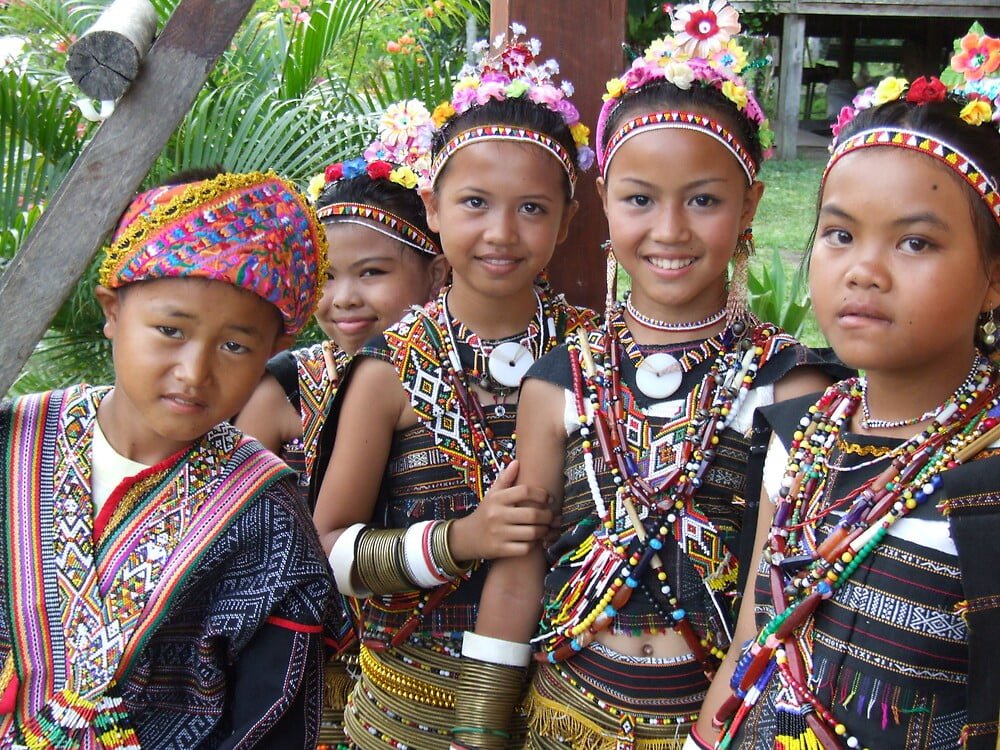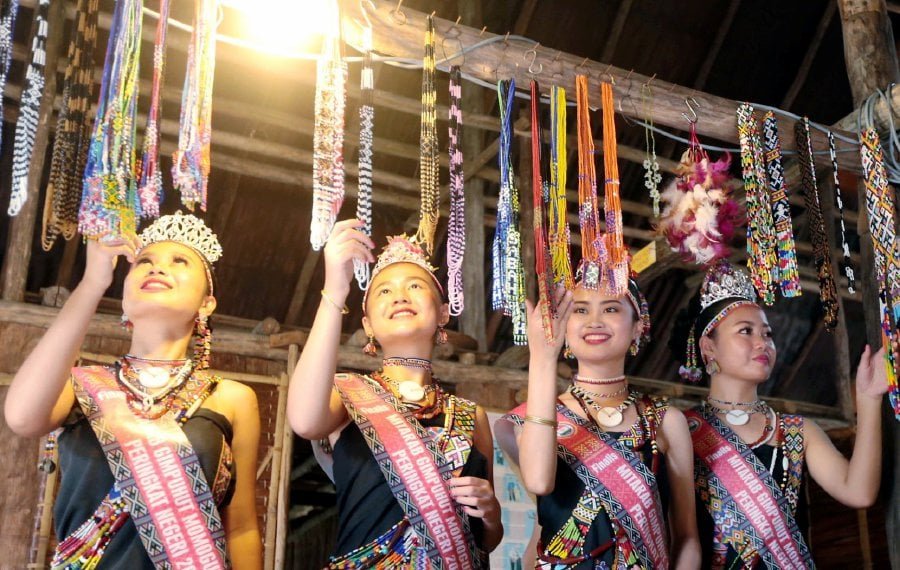People & Culture
The Amazing Culture of The Rungus

Published
3 years agoon
By
M N Ridwan
The most traditional ethnic group in Sabah is probably the Rungus, who live in the Kudat region in the north.
They maintain an age-old way of existence and are incredibly resilient in this period of change.
Their way of life, like that of the majority of Borneo’s tribes, revolves around rice: the preparation of the padi field or the clearing of a hill plot, the cultivation and maintenance of the rice, and then the harvest.
The Rungus can earn money thanks to their extensive banana and coconut plantations, but overall, their traditional way of life suits them quite well and seems to keep them out of danger and worry.
Long before the British arrived in Sabah, the Rungus appear to have been the last Dusunic immigrants to make a permanent home there.
Interestingly enough, the Kadazan-Dusun subgroup known as the Rungus has its own unique language, a few dialects, architecture, adat (customs), and clothing.

Most of the other tribes of the Kadazan-Dusun community are believed to have had similar dresses and attires: simple black sarongs for the women, wide black trousers for the men, and beaded accessories.
Many people, especially from the older generation, still dress the way they did when they were still unaffected by outside influences.
Moreover, it is common to see elderly women wearing the traditional home-woven sarong while still having their wrists encased in brass coils together with white and black shell bracelets at either end.
Furthermore, they also wear vintage heritage beads, and the betel container is an antique Bruneian brass bowl that has been expertly crafted.
Women who do don traditional clothing are frequently highly regarded Bobolizans, the Rungus shamans.
According to their long-held beliefs, the Bobolizans are here to preserve peace between people, nature, and the astral world in addition to practicing traditional healing using natural herbs.
A trip to a local longhouse is a fantastic and thrilling adventure to undertake. Only a few locations in Sabah, like the Tinangol Longhouse or the Bavanggazo Longhouse, regularly host tourists.
These locations have particular amenities that make a foreign traveler’s or visitor’s stay more comfortable.
The traditional longhouse, however, is still there in the Kudat region if one travels along some deserted roads, along rivers, and through tall coconut plantations.
In their longhouses, Atap has been replaced by corrugated iron, which requires less maintenance.
As a matter of fact, the Murut Longhouse, also found in Sabah, is substantially different from the Rungus Longhouse.
The homes are typically only three to five feet above ground; meaning they are not set on abnormally high stilts.

Meanwhile, the roof inside the longhouses is relatively low, and legend has it that there used to be longhouses with 75 doors.
As a matter of fact, these days, the number of doors along the common gallery’s elevated split bamboo platform rarely exceeds ten.
Wide-spaced pole walls with an outward slope surround the home. This offers fresh air and a cozy spot to sit down and work, unwind, or socialize.
Where there is a longhouse, there may be some “one-family” homes; these homes frequently appear as if they were just cut out of the original longhouse.
In the clearing where the cottages are located, dogs, chickens, and other domesticated animals proliferate, while little children who are too young to assist with daily duties play in the sand.
When a visitor arrives, they will make a quick announcement and invite them into the house to rest.
Along with the bachelors, strangers/visitors also sleep on the higher platforms of the plains.
In the homes, there is a definite sleepiness that permeates the sweltering afternoons.
When they are not working in the fields, the Rungus love to catch fish and crabs, or they doze off on the platform in the gallery.
The gallery trembles under the many feet as people return from work in the late afternoon.
Amazingly, the ladies bring out their basketry, bead-stringing, or sash-weaving work when the house starts to come alive in the late afternoon.

If there is no generator to supply electric light when it becomes dark, you are fortunate because you are transported back in time!
Small oil lamps start to appear, possibly gas pressure lamps, and families and groups of friends start to assemble to talk about everyday affairs and trade rumors.
The women won’t begin husking the rice for the evening and morning meals until after dusk, using hefty ironwood pestles and antique, wooden mortars.
The rhythmic sound of the rice being pounded, the women winnowing at dusk, and the pigs snorting beneath the house’s floor all add to the atmosphere of tranquility and bygone eras.
Nevertheless, despite their tranquility and seeming eternal doze, the Rungus are very much a part of our contemporary world.
Over the past 30 years, cash crops have already enabled the Rungus to generate income and, in some cases, wealth.
Their youth are receiving an education, and some have graduated from college and joined the Sabah State Government.

Most Rungus seem to be highly entrepreneurial, and many of them work in the city.
Even Nevertheless, men frequently choose to return to the tranquil and serene life of the kampung where they take a wife when they have enough money to pay dowrie.
Thanks for reading and stay tuned for more interesting cultures around the world.





